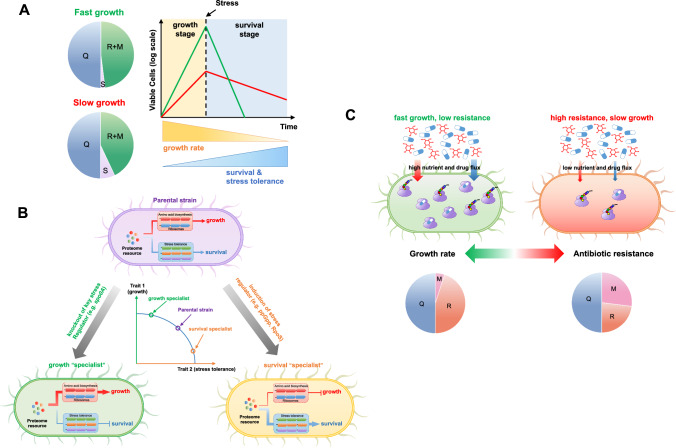Fig. 3. Growth-survival trade-off.
A Slow growth could boost the survival and stress tolerance of bacteria. During slow growth conditions such as poor nutrients, bacteria could have a higher proteome investment on stress response (S), thus facilitating the long-term survival during sudden stress conditions. R+ M denotes the sum of growth rate dependent ribosomes (R) and metabolic sector (M). B Trade-off between growth and survival due to proteome allocation constraints. Growth and survival traits have proteome allocation conflicts and bacteria often need to balance the proteome investment on these two traits according to their environmental conditions. Knockout of some key stress regulators (e.g. spo0A in B. subtilis) favors growth at the cost of compromised survival, generating a growth ‘specialist’. In contrast, induction of certain stress regulators (e.g. ppGpp or RpoS protein) could favor survivability at the cost of reduced growth rate, generating a survival ‘specialist’. C An example of trade-off between growth and drug resistance against streptomycin for E. coli. Evolution favors the emergence of streptomycin resistant strains with compromised nutrient and drug uptake (right) so that the in vivo levels of both the drug and its ribosome targets decrease. As a result, resistance occurs at the cost of reduced drug-free growth rate due to decreased resource allocation towards ribosome synthesis (R sector) compared with native strain (left).

